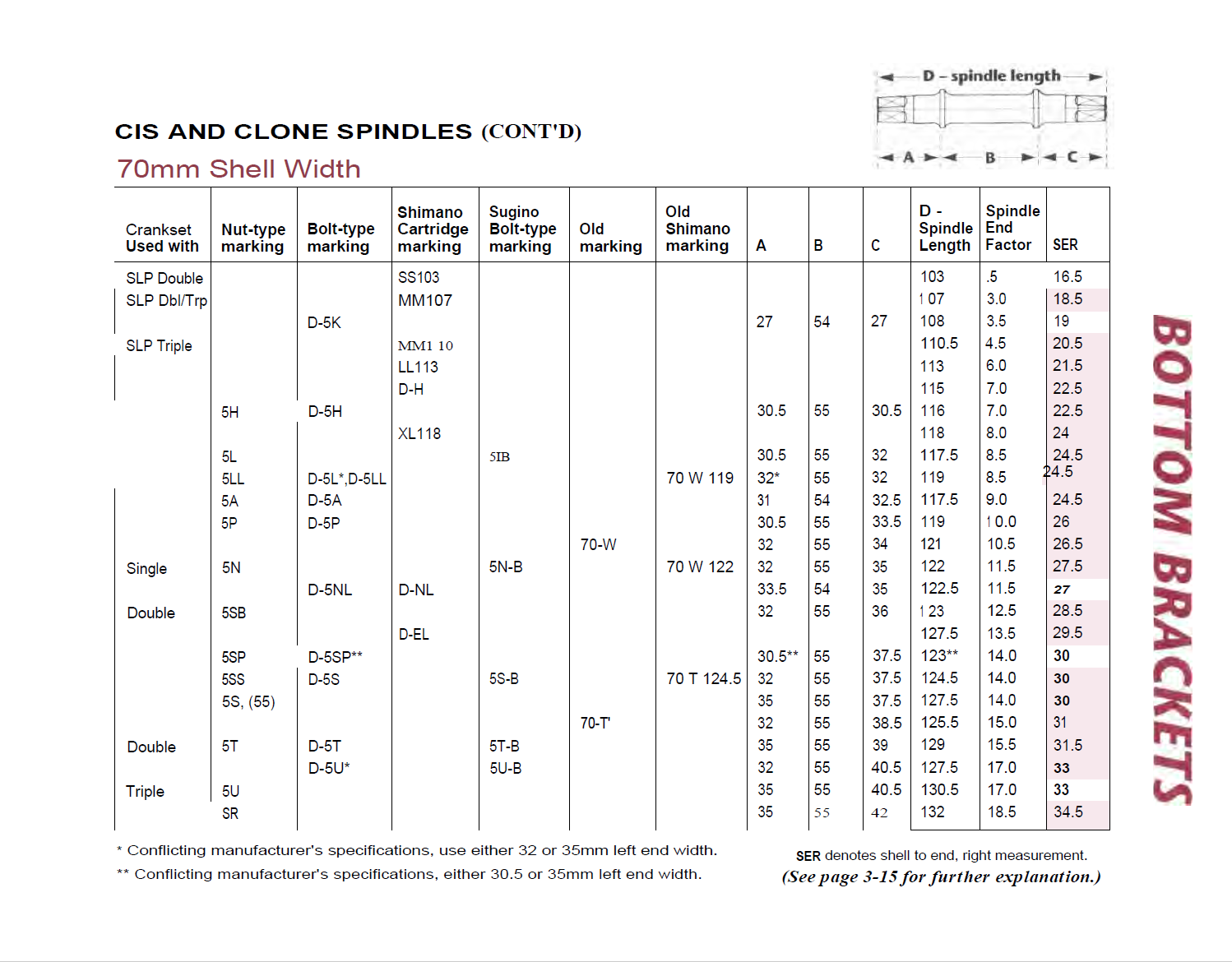One of the potentially confusing things about looking at the sources that are out there for this is that the numbers are all referenced to the key dimensions of the pre-cartridge world, where cups and spindles were typically modular components you'd mix and match. JIS spindle codes are basically a way of dividing a cup and cone spindle into three sections: the middle section length between the bearing races, and the race to the tip on either side. The different variables in each code are giving you the length of each of those three sections plus telling you whether the spindle is bolted or nutted, and that's all the system is. When a cartridge BB bears a JIS spindle code, it's telling you what the equivalent looseball spindle would be or what it would replace, but it doesn't have the same physical reference points.
Here is a snippet from Sutherlands 6th that shows its take on how to interpret the codes:

And here is the physical length data:




The JIS is still a living standards body. They appear to publish a current version of the JIS bottom bracket standard, but it costs money. I'm curious what's inside but I've never seen it.
It gets tricky with tandems as you know, since chainline concerns applying to both sides and not just one means fudging things with spacers doesn't apply in the same way that it can when making a symmetrical modern repair BB work with cranks that want asymmetrical.
One solution if the exact right asymmetric spindle is unavailable is to get complete Phil sets front and rear, make the stoker DS chainline be what it should, then make the captain sync chainline match where the stoker sync chainline landed. You can do the same in a cheaper, messier way using 73mm Shimano BBs (presuming the frame is 68mm) and using spacers under the drive side cups to adjust the chainline. The principle if you do it that way is you have some liberty to make the captain DS crank Q be whatever, which it might have to if they're non-matching cranks.
On some tandems, the eccentric overhangs past the shell enough that you could also use it to dial chainline and still have 100% contact with it. Obviously that's not really ideal, but it could also be reasonable if the budget isn't there to get one of the solutions that is ideal (Phil BBs or modern cranks, for example).





